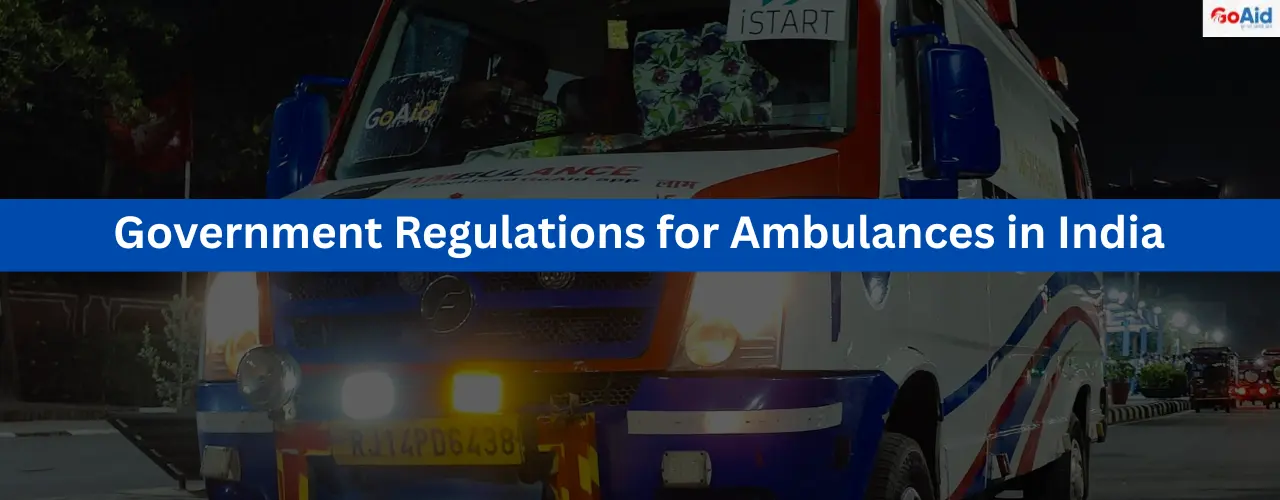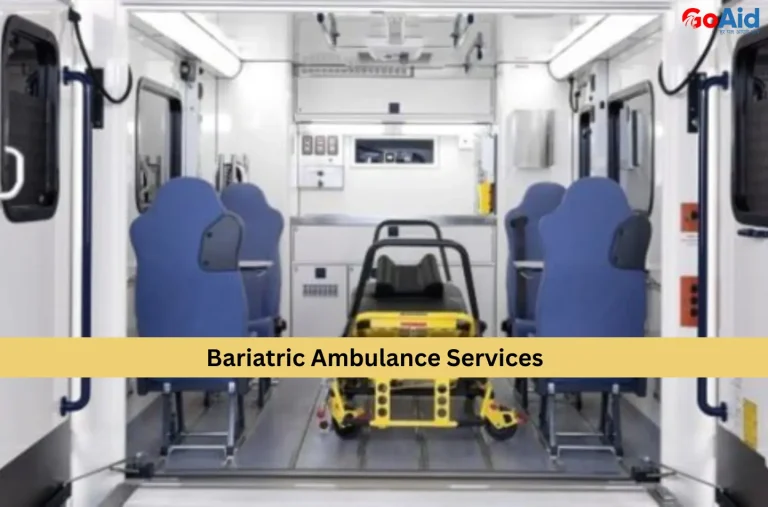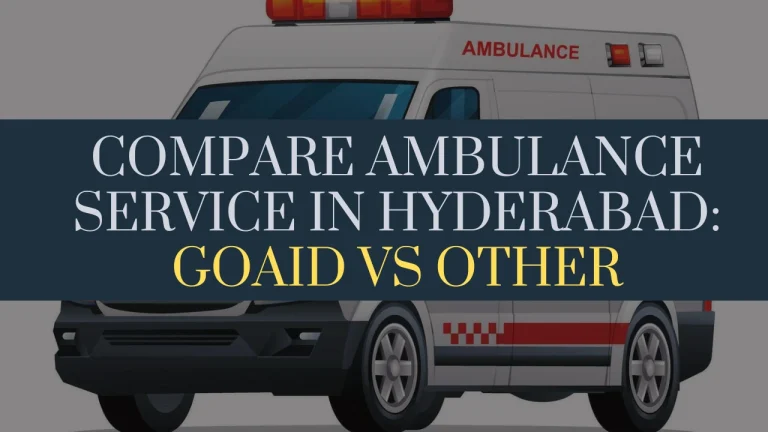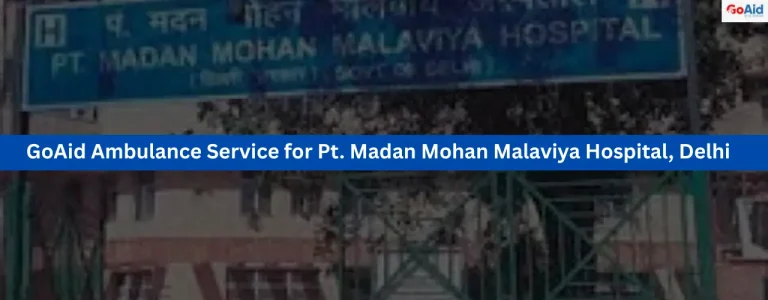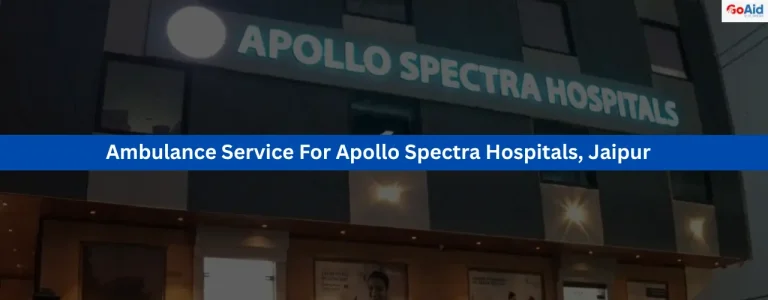In India, Ambulance services play an important role during medical emergencies. That’s why the Indian government strengthens ambulance service regulations. These government regulations ensure safety and accountability in the healthcare sector.
In this blog, we are providing important information about Government Regulations for Ambulances in India, the Latest Government Regulations for Ambulances in 2025, Government Regulations for Various Components of Ambulance Services, and Vehicle Standards Under the National Ambulance Code 2025. Are you interested in knowing about it? If yes, then you donŌĆÖt need to wait any longer
LetŌĆÖs start reading
Why is Knowing About Government Regulations for Ambulances Crucial?
The right understanding of ambulance service legal guidelines helps patients, providers, and emergency responders ensure lawful, safe, and efficient services.
- Ensures Standardized Patient Care: By following government rules for ambulances, service providers deliver consistent and regulated care during emergencies, reducing the risk of negligence and delays.
- Legal Protection for Providers & Patients: Awareness of the law for ambulance services safeguards both ambulance operators and patients by establishing clear responsibilities and legal boundaries.
- Better Emergency Preparedness: Knowledge of the latest regulations for ambulances helps agencies and citizens stay better prepared and compliant during emergencies or disasters.
- Promotes Fair Pricing & Transparency: Government mandates enforce ethical billing, ensuring that ambulance pricing regulations are followed and patients arenŌĆÖt overcharged.
- Improves Accountability in Emergency Response: With ambulance service rules in India 2025, services can be monitored and audited to ensure timely response and legal adherence.
- Encourages Proper Training & Staffing: Rules include standards for paramedic training and qualifications, ensuring that only skilled professionals operate under the ambulance service’s legal guidelines.
- Boosts Trust in Ambulance Services: Public trust grows when people know government regulations for ambulances in India are actively enforced and updated for safety and quality.
Latest Government Regulations for Ambulances in 2025
In 2025, India introduced several new ambulance laws to enhance public health response.
- Mandatory GPS & Tracking: Every ambulance must be equipped with GPS and be trackable by emergency authorities, as per the latest regulations for ambulances under the updated health framework.
- Uniform Color and Marking System{ To prevent misuse and confusion, the government rules for ambulances mandate a standard design and color scheme across India.
- 24/7 Operational Availability: All licensed ambulances must offer 24/7 services, aligning with ambulance service rules in India 2025 for continuous emergency care access.
- RTO Registration & Compliance Stickers: Under RTO rules for ambulances in India, every ambulance must pass periodic checks and display certification stickers on windshields.
- Emergency Priority Access: Ambulances must be given priority passage through traffic and toll gates as per the new ambulance guidelines in India 2025.
Know More: Ambulance services near Max Hospital, Delhi
Government Regulations for Various Components of Ambulance Services
The government now regulates several operational aspects of ambulance services to ensure comprehensive legal compliance.
- Paramedic Certification: All staff must have verified medical training, in line with ambulance service legal guidelines, to ensure skilled medical intervention on the move.
- Equipment Compliance: Ambulances must carry essential emergency gear depending on the type (BLS, ALS, ICU) as mandated by government regulations for ambulance services in 2025.
- Communication System Setup: Services must maintain direct radio or digital communication with hospitals and emergency centers to align with the law for ambulance communication standards.
- Patient Record Maintenance: Ambulances must maintain digital patient records, complying with government rules for ambulance documentation and transparency.
- Vehicle Condition & Maintenance: Strict checks for vehicle maintenance have been included in ambulance service rules in India 2025 to avoid breakdowns during emergencies.
Also Read: Difference between BLS Ambulance and ALS Ambulance
Vehicle Standards Under the National Ambulance Code 2025
Ambulances in India must comply with updated vehicle norms under the National Ambulance Code.
- AIS-125 Certification: Every ambulance must comply with AIS-125 Type Approval, ensuring uniform design and mechanical safety as per RTO rules for ambulances in India.
- High-Roof & Sliding Doors: Ambulances must be equipped with high roofs and side sliding doors to facilitate easier patient access under government regulations for ambulance services 2025.
- Separate Medical Cabin: Vehicles should have an isolated medical cabin for infection control, as mandated by the new ambulance guidelines in India 2025.
- Infection Control & Sanitation Protocols: Ambulances must feature antimicrobial surfaces, seamless flooring, and separate clean-contaminated zones to minimize infection risks. Onboard hand sanitizers, PPE storage, and biohazard disposal bins are mandatory to maintain hygiene and patient safety during every emergency transfer.
- Fire Safety & Electrical Compliance: Ambulance interiors must include flame-retardant materials, certified electrical wiring, and a reliable circuit breaker system. Fire extinguishers should be easily accessible, and all medical equipment must meet safety benchmarks to prevent fire hazards during critical patient care transport.
Compliance & Safety Standards for Ambulance Design
Safety design norms aim to reduce risks to patients and staff during emergencies.
Shock-Absorbing Interiors: Ambulance interiors must be made of shock-absorbent and washable materials, following ambulance service legal guidelines.
Fire Safety Compliance: Every vehicle must carry certified fire extinguishers and flame-retardant materials, as per the latest regulations for ambulances.
Ventilation & Temperature Control: To maintain hygiene and comfort, ventilation and air conditioning systems are now required under government rules for ambulance interiors.
Pricing Regulations & Transparency Mandates
To prevent overcharging and maintain trust, strict pricing rules are enforced.
Display of Rate Cards: Every ambulance must display government-approved charges both online and inside the vehicle to comply with ambulance pricing regulations.
No Surge Pricing During Emergencies: Ambulance operators are prohibited from raising rates during crises, ensuring affordable services under law for ambulance operations.
Online & Paper Billing Mandates: All payments must come with itemized invoices, maintaining transparency under ambulance service legal guidelines.
Penalties for Non-Compliance in 2025
The government has enforced strict penalties to ensure adherence to ambulance service rules. Operators violating government regulations for ambulance services in 2025 may face heavy fines, license suspension, or permanent de-registration. Non-compliance with RTO rules for ambulances in India, such as not installing GPS or skipping vehicle inspections, may result in penalties up to Ōé╣5 lakhs or legal proceedings under public safety laws.
Moreover, refusal to serve during emergencies or charging unapproved fees can lead to criminal charges under the law for ambulance misconduct. These strong measures ensure patient safety, ethical business practices, and efficient emergency medical response in India.
Book Ambulance: GoAid Ambulance Service
Conclusion to the Government Regulations for Ambulance Services in 2025
In 2025, government regulations for ambulance services in India will have evolved to promote safer, more efficient, and legally compliant emergency response. From updated RTO rules for ambulances in India to new pricing laws and safety codes, the framework protects both patients and providers.
As healthcare needs rise, adherence to these ambulance service legal guidelines becomes essential. Whether you’re a citizen, hospital, or operator, understanding these new ambulance guidelines in India 2025 ensures better preparedness and care in life-threatening situations. LetŌĆÖs stay informed, compliant, and committed to saving lives responsibly.
FAQs related to the Government regulations for ambulance services in 2025
Question 1: What are the latest government rules for ambulances in 2025?
Answer: The 2025 rules mandate GPS, 24/7 operation, uniform designs, licensed paramedics, and AIS-125 compliance under the government regulations for ambulance services.
Question 2: Are there any penalties for not following ambulance regulations in India?
Answer: Yes, operators may face license suspension, fines, or imprisonment for violating ambulance service legal guidelines in 2025.
Question 3: What is AIS-125 in the context of ambulance services?
Answer: AIS-125 is a design and safety code under RTO rules for ambulances in India that regulates vehicle structure and interior.
Question 4: Can ambulances charge more during emergencies?
Answer: No, ambulance pricing regulations in 2025 prohibit surge pricing even during crises to maintain fairness and accessibility.
Question 5: How can I report an ambulance overcharging incident?
Answer: File a complaint with your stateŌĆÖs RTO or health department under the law for ambulance service violations.

